Abstract
A study of the intermediate snail hosts of Schistosoma mansoni in Lake Victoria at Mwanza, Tanzania, was begun in October 1969, the main aims being to investigate the distribution and seasonal variations in population densities of Biomphalaria choanomphala and B. sudanica in relation to the nature of the lake bottom and the biological features of the lake shore, the factors influencing variations in the intensity of S. mansoni transmission along the Mwanza shoreline, and the age structure of populations of B. choanomphala. Field surveys were made at 70 sites near Mwanza and in nearby bays, B. choanomphala being collected from the lake bottom by means of a wire-mesh dredge. Variations in the distribution and population density of B. choanomphala were correlated with the nature of the bottom and its depth profiles at depths of 0.5-6.0 m. Approximately 1-20 snails/m2 were found on mixed sand and mud but only about 1 snail/m2 on the predominantly muddy bottom farther out from the shore. Seasonal variations in the age structure and fluctuations in the population densities of B. choanomphala of as much as 10-13-fold were observed. A large and a small form of B. choanomphala, possibly ecophenotypes, were found. S. mansoni infection rates in B. choanomphala ranged from 0.2% to 3.3%, suggesting a tendency to higher infection rates in mature snails.
Full text
PDF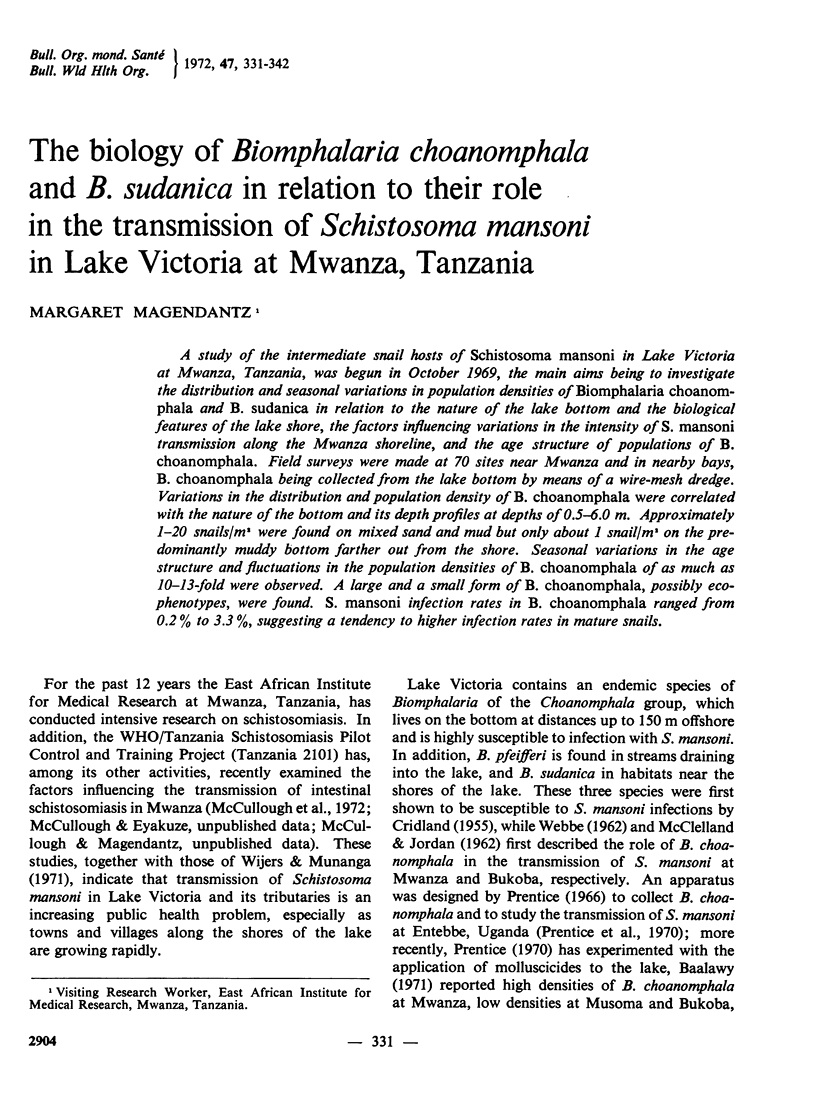

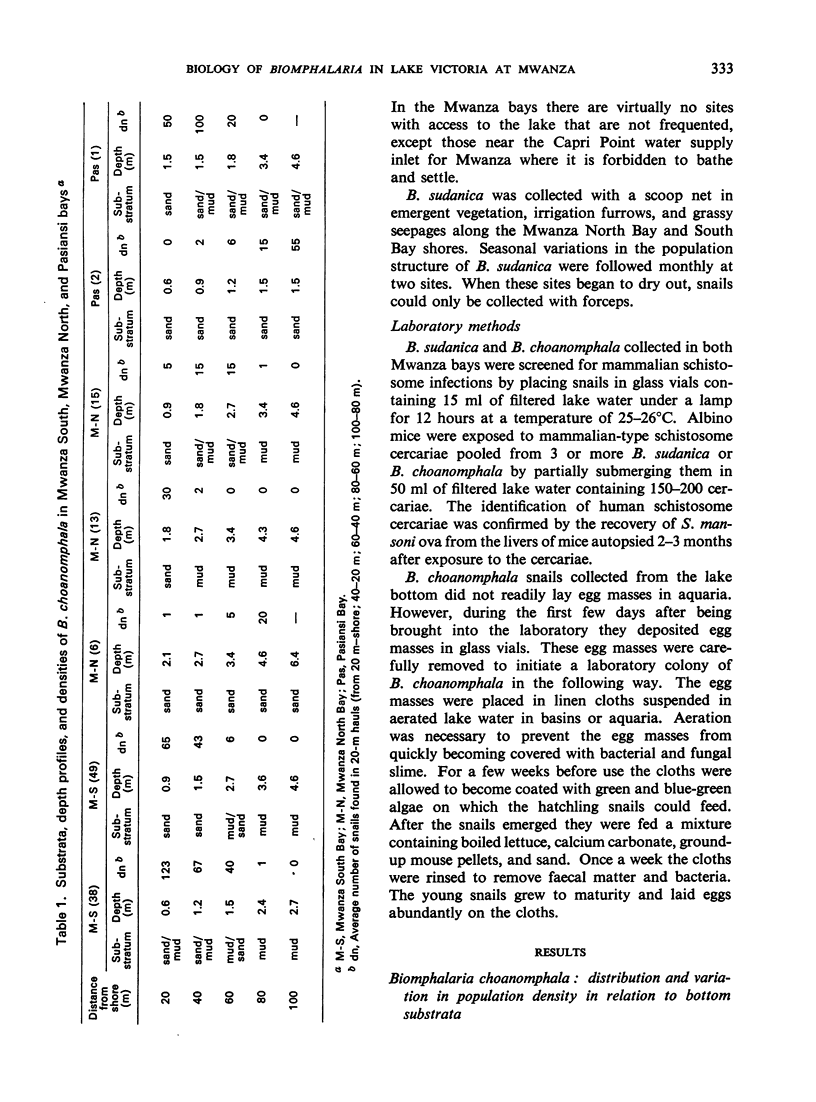
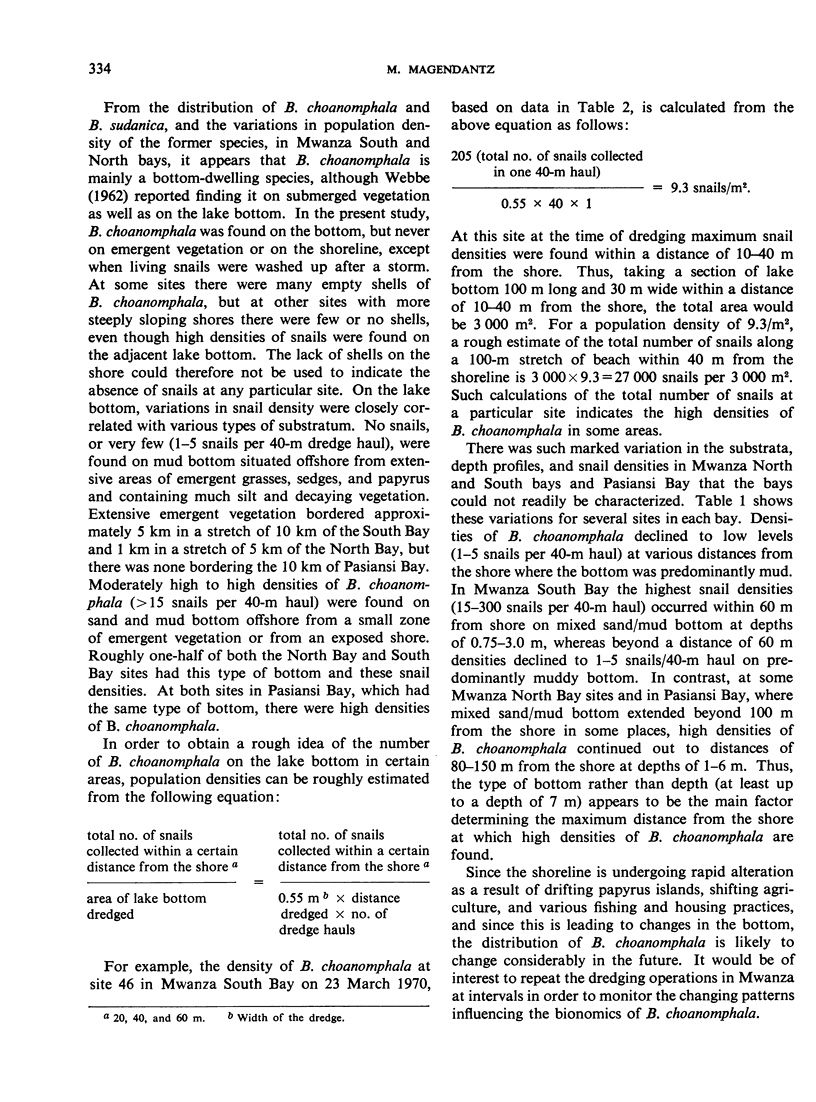
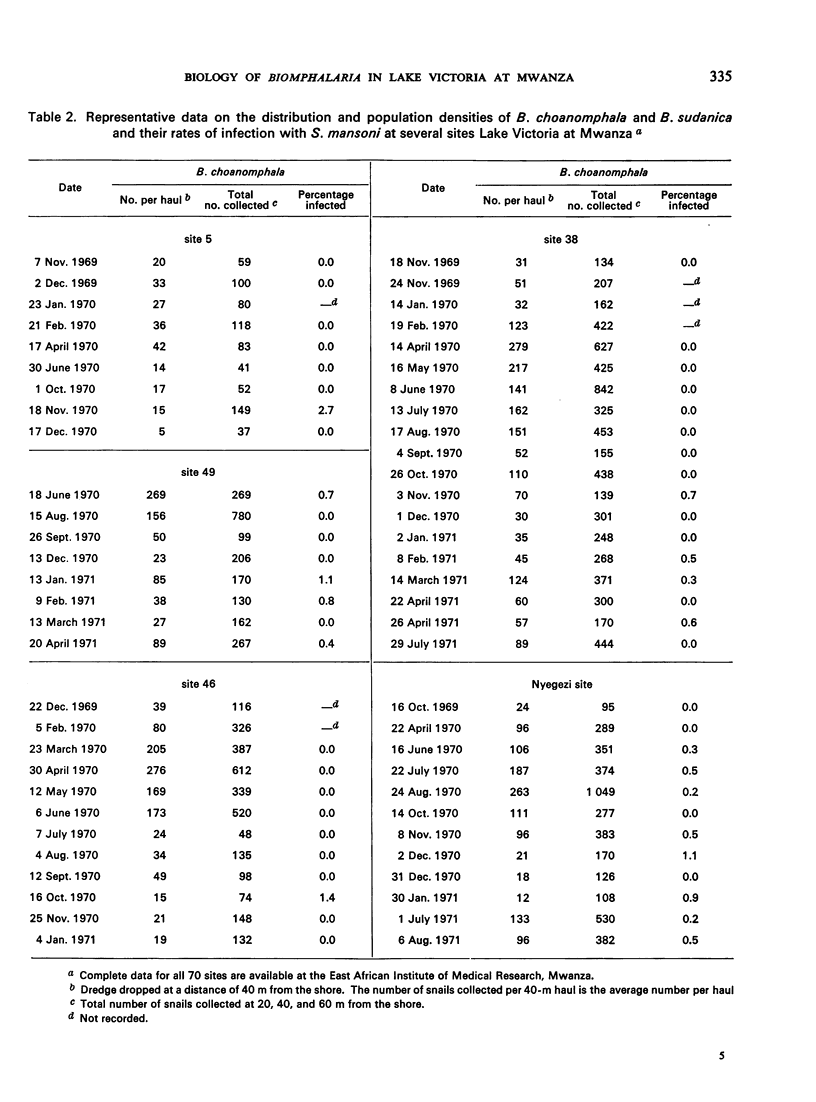
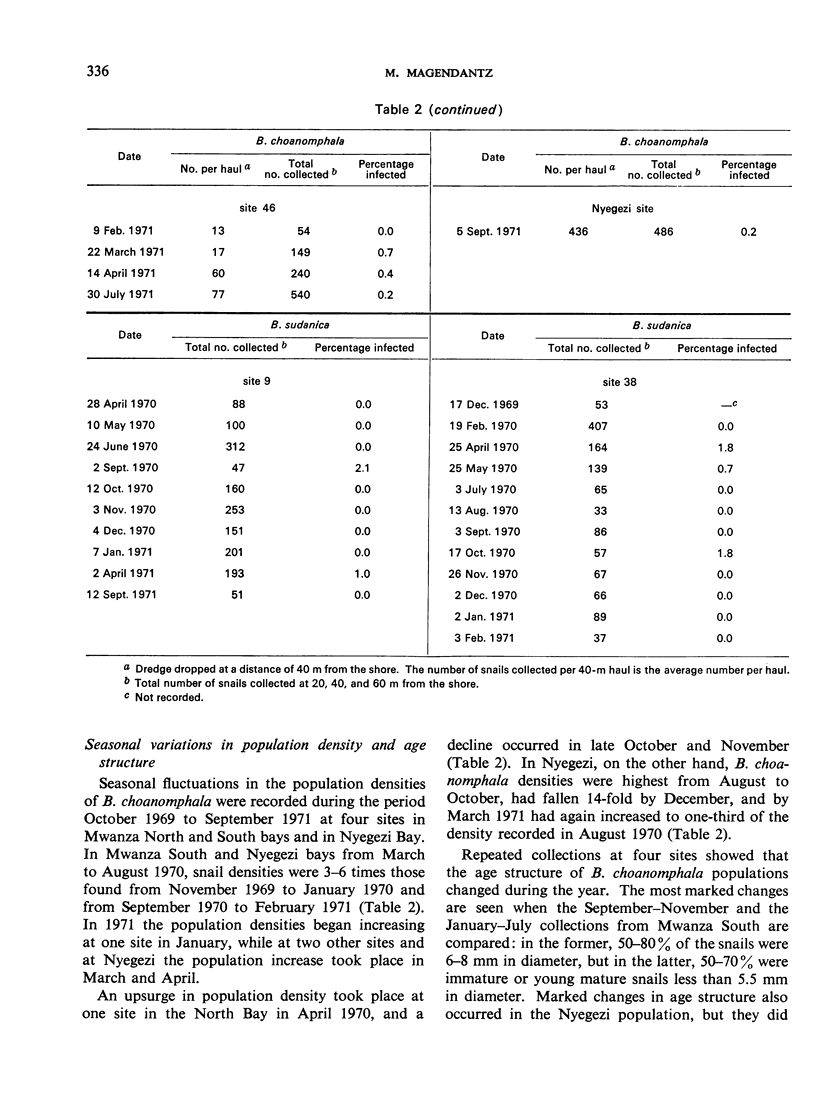
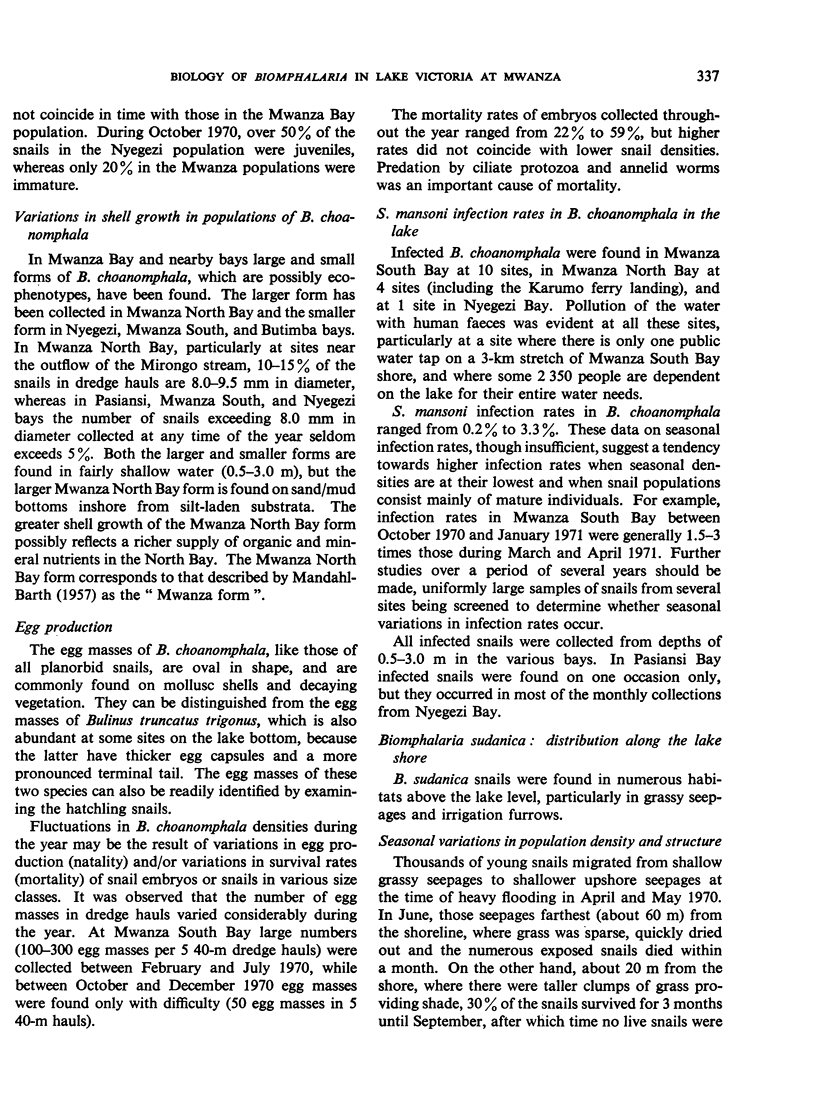
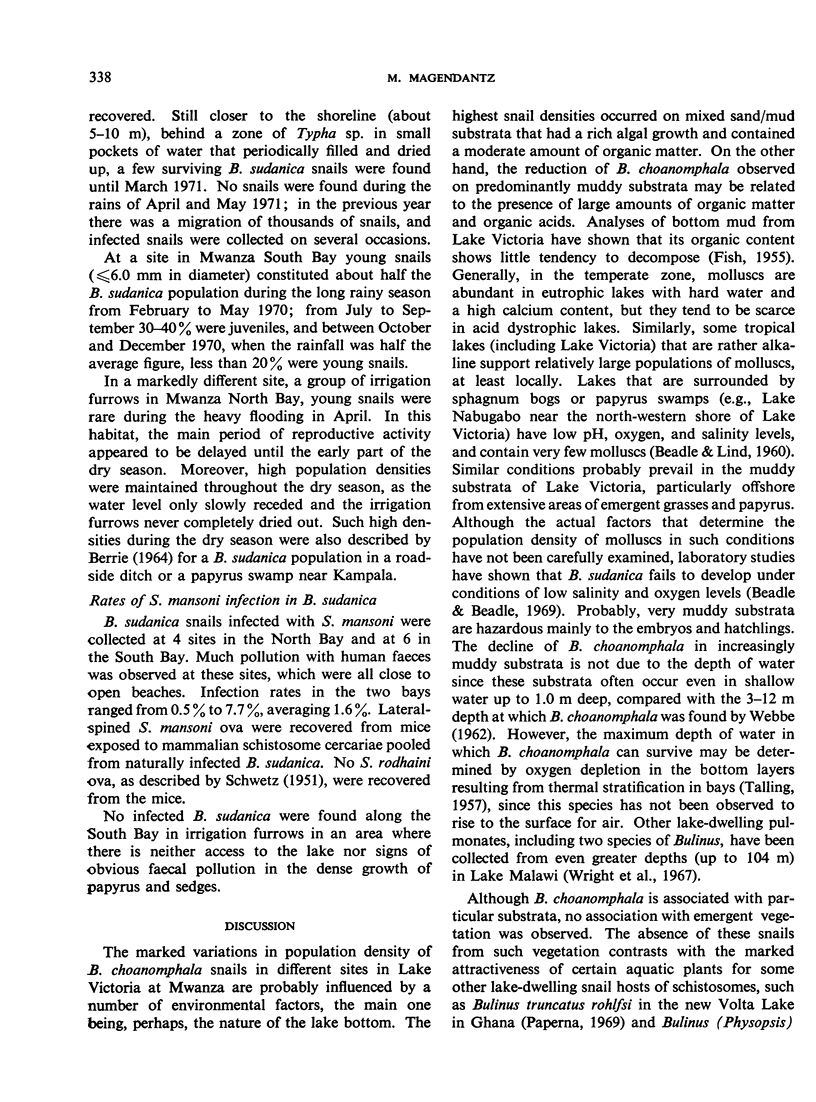
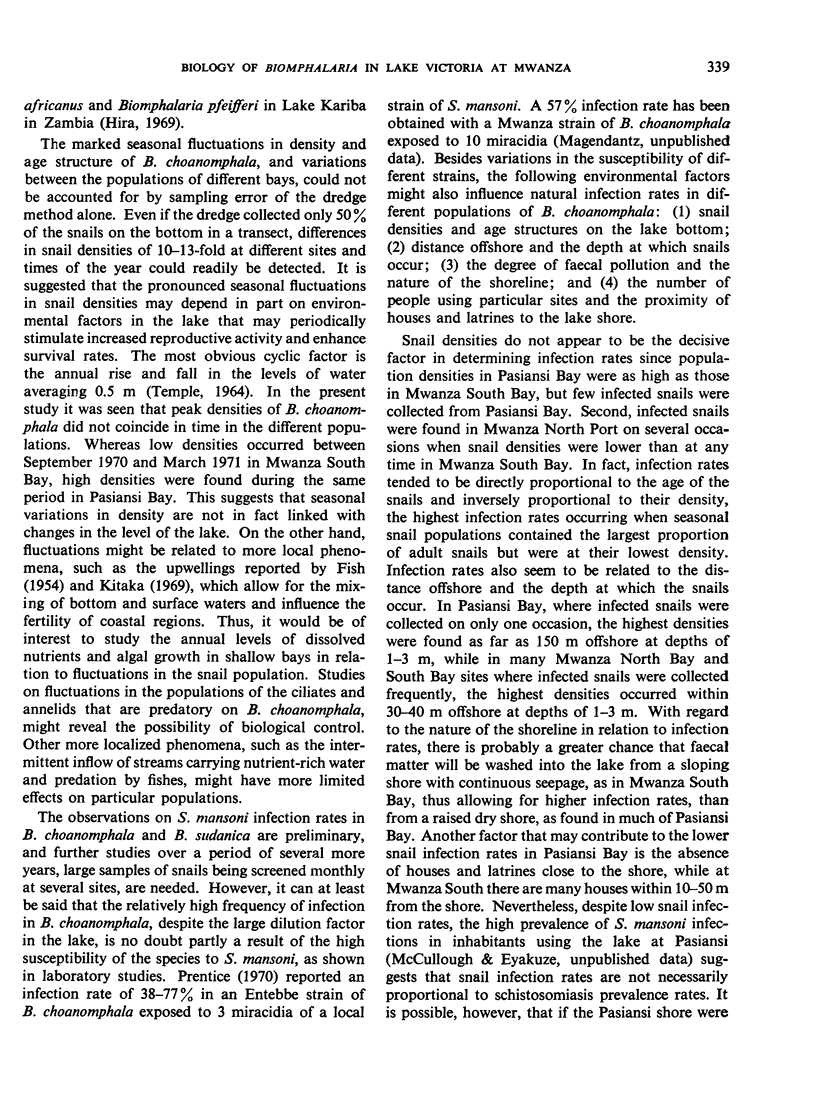
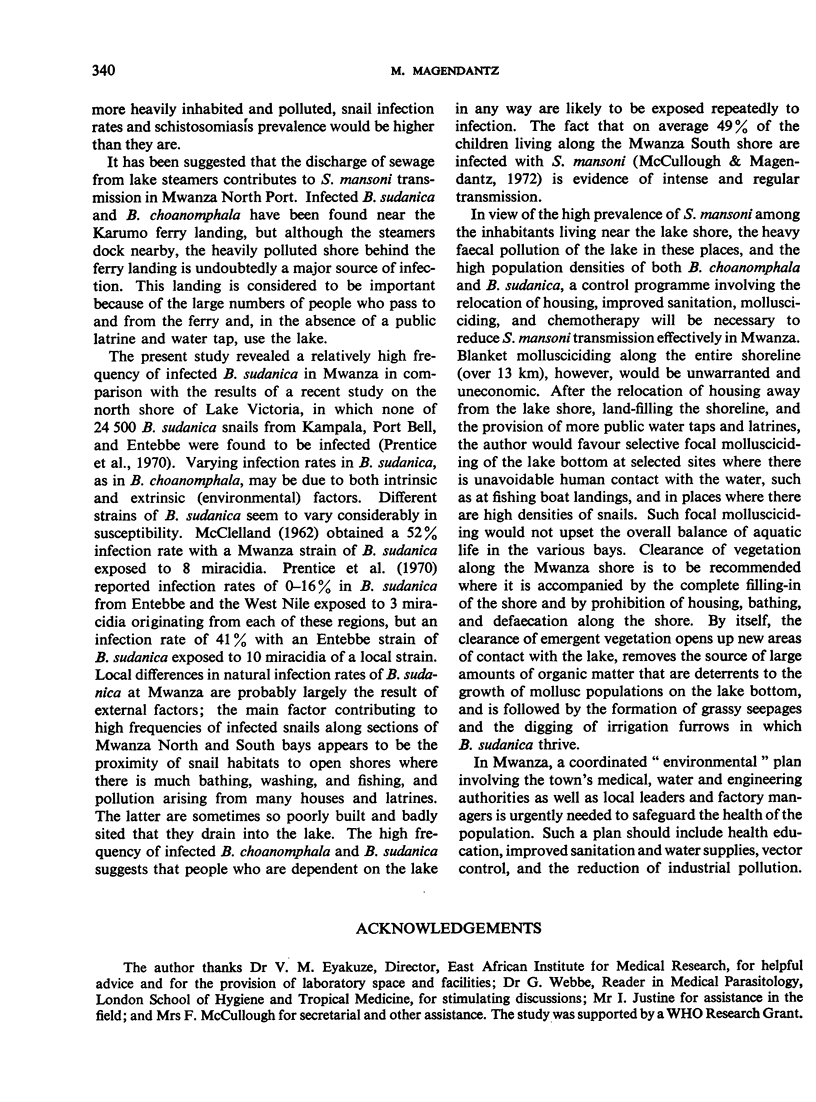
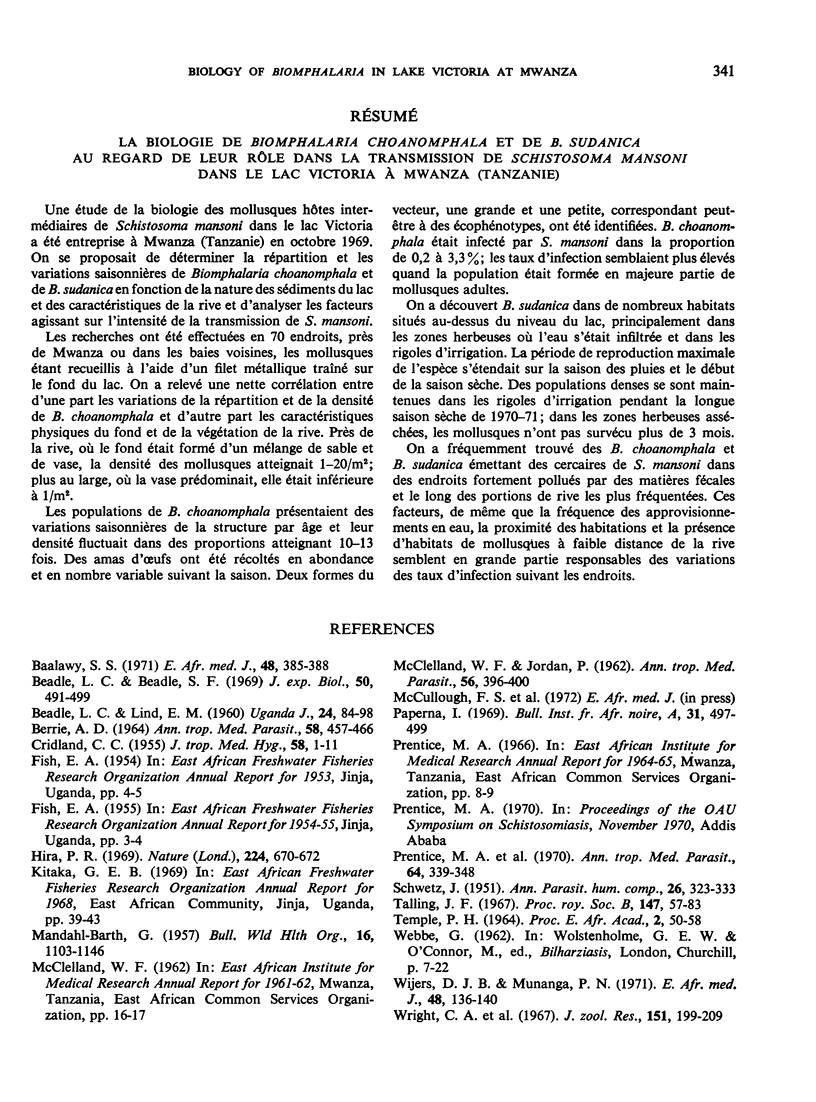
Selected References
These references are in PubMed. This may not be the complete list of references from this article.
- BERRIE A. D. OBSERVATIONS ON THE LIFE-CYCLE OF BULINUS (PHYSOPSIS) UGANDAE MANDAHL-BARTH, ITS ECOLOGICAL RELATION TO BIOMPHALARIA SUDANICA TANGANYICENSIS (SMITH), AND ITS ROLE AS AN INTERMEDIATE HOST OF SCHISTOSOMA. Ann Trop Med Parasitol. 1964 Dec;58:457–466. doi: 10.1080/00034983.1964.11686268. [DOI] [PubMed] [Google Scholar]
- Baalawy S. S. Some observations on the role of Lake Victoria in the transmission of Schistosoma mansoni. East Afr Med J. 1971 Aug;48(8):383–388. [PubMed] [Google Scholar]
- Beadle L. C. Salt and water regulation in the embryos of freshwater pulmonate molluscs. 3. Regulation of water during the development of Biomphalaria sudanica. J Exp Biol. 1969 Apr;50(2):491–499. doi: 10.1242/jeb.50.2.491. [DOI] [PubMed] [Google Scholar]
- CRIDLAND C. C. The experimental infection of several species of African freshwater snails with Schistosoma mansoni and S. haematobium. J Trop Med Hyg. 1955 Jan;58(1):1–11. [PubMed] [Google Scholar]
- MANDAHL-BARTH G. Intermediate hosts of schistosoma; African Biomphalaria and Bulinus. I. Bull World Health Organ. 1957;16(6):1103–1163. [PMC free article] [PubMed] [Google Scholar]
- Prentice M. A., Panesar T. S., Coles G. C. Transmission of Schistosoma mansoni in a large body of water. Ann Trop Med Parasitol. 1970 Sep;64(3):339–348. doi: 10.1080/00034983.1970.11686703. [DOI] [PubMed] [Google Scholar]
- SCHWETZ J., BAUMANN H., FORT M. Recherches sur Schistosoma rodhaini Brumpt 1931 (première étude). Ann Parasitol Hum Comp. 1951;26(4):323–333. doi: 10.1051/parasite/1951264323. [DOI] [PubMed] [Google Scholar]
- Wijers D. J., Munanga P. N. Schistosomiasis on Mfangano Island (South Nyanza, Kenya). East Afr Med J. 1971 Mar;48(3):135–140. [PubMed] [Google Scholar]


